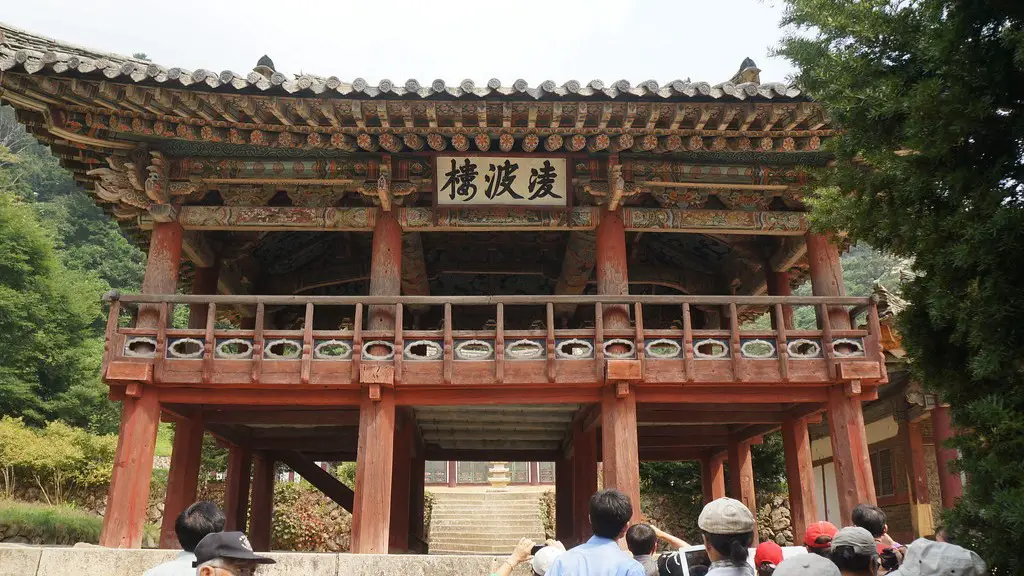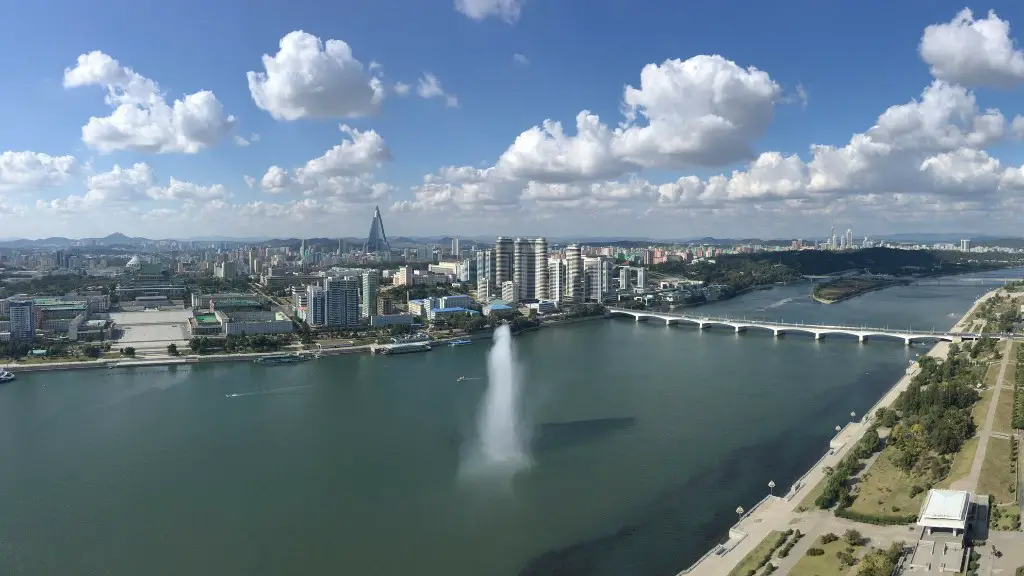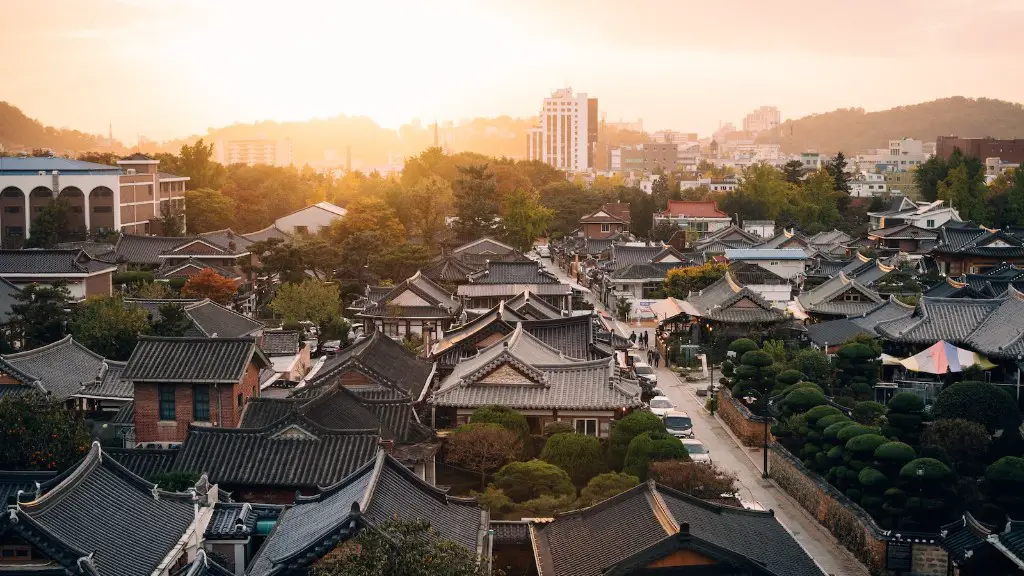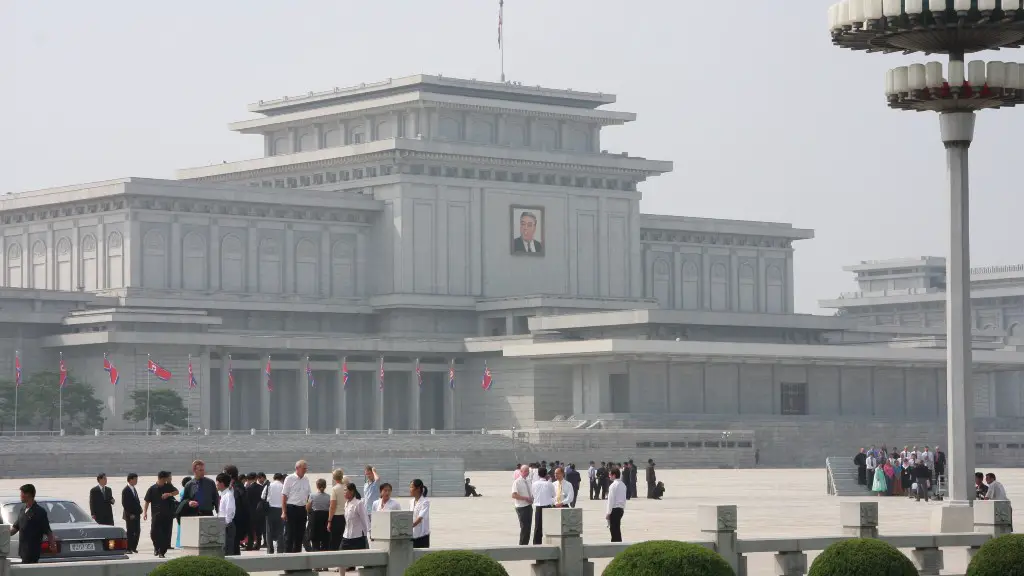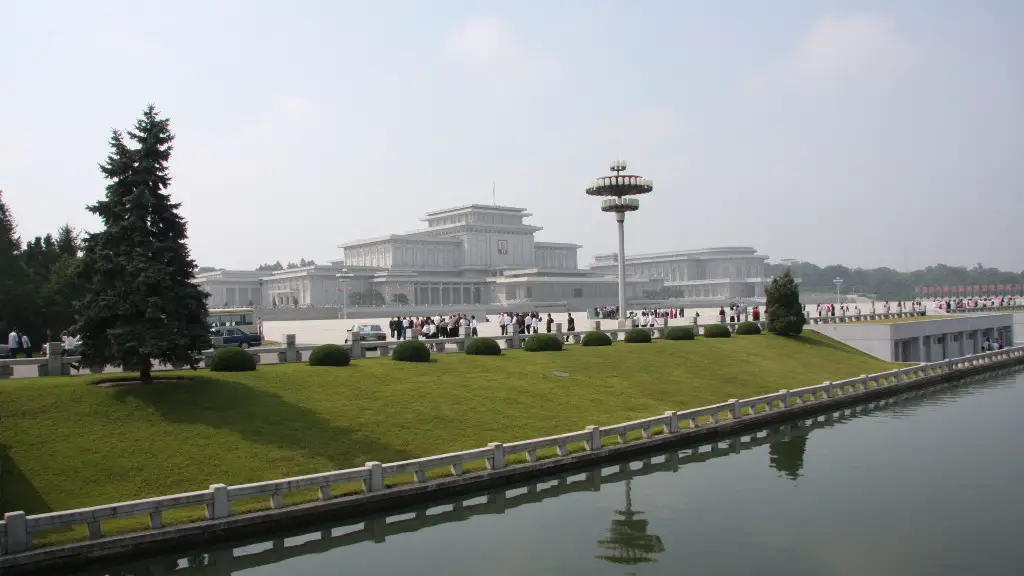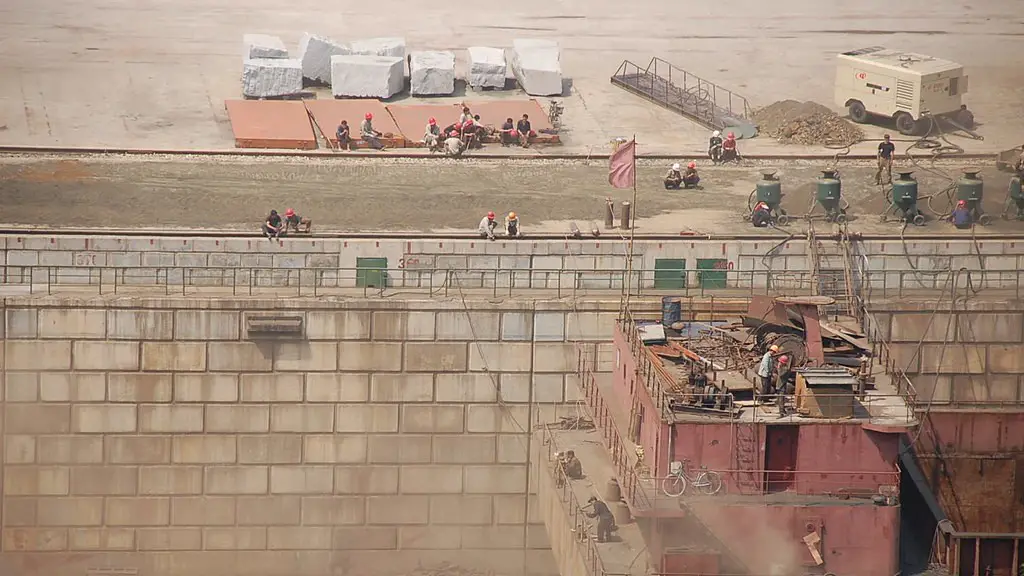Sitting on the edge of the East Sea is one of the most divided nations in the world – North and South Korea. North Korea is officially known as the Democratic People’s Republic of Korea and South Korea as the Republic of Korea. Both countries have a long and complex history which has resulted in the current situation of both Koreas being separated.
The divided Koreas can trace their origins back to the Japanese occupation of Korea in 1910. The Japanese colonizers imposed their culture, language and laws over the Korean people and banned many traditional Korean practices from taking place. In August 1945, when Japan surrendered, Korea was liberated from the Japanese occupation.
In 1945, the leaders of the United States (US) and the Soviet Union (USSR) agreed to split Korea along the 38th parallel. The US led South was dubbed the “Republic of Korea” and the USSR led North was called the “Democratic People’s Republic of Korea” and each had a system of government modeled after their respective backers. During the Cold War, North and South Korea each held deep suspicions and fears of their adversary, made worse by the fact that both claimed their governments to be the only legitimate ruling body on the Korean Peninsula.
In June 1950, North Korea invaded South Korea, which it saw as its enemy in an attempt to reunify Korea by force. The invasion took South Korea by surprise and the capital Seoul was quickly taken by the North Korean forces. The South Korean government appealed to the United Nations (UN) for help and the UN responded by sending troops from the US, Canada and a number of other countries. The conflict dragged on for over three years, with the two sides reaching a ceasefire in July 1953. The ceasefire left Korea divided along the 38th parallel, with the two sides facing off in the Demilitarized Zone (DMZ).
Since then, the two Koreas have been kept apart by a heavily fortified border, with both countries maintaining a state of extreme militarized tension. A historic Inter-Korean Summit was held in 2018, attended by the leaders of both North and South Korea. During this meeting, the leaders of the two Koreas committed themselves to working towards peace and an eventual reunification of the Korean peninsula.
In spite of this change in rhetoric and the occasional period of detente, the situation between North and South Korea continues to remain tense and the uncertainty continues to grow. North Korea remains one of the most closed off nations in the world and its citizens have limited access to outside information. As a result of its authoritarian rule, many North Koreans live in extreme poverty and lack basic necessities such as food and medicine. Meanwhile, South Korea has become one of the world’s economic powers, with a thriving tech industry and a highly educated workforce. The living standard of South Koreans is drastically different from that of their Northern counterparts.
The Influence Of Global Superpowers On The Division
The global superpowers have also played a major role in the history of North and South Korea. In particular, the US has provided South Korea with military and economic assistance in order to maintain its independence and stability. The US also provided South Korea with diplomatic backing on the UN Security Council, which enabled it to gain international recognition. North Korea, on the other hand, has had historical ties with the Soviet Union and China, both of which provided economic and political support to the Pyongyang government. Recently, North Korea has also increasingly looked to Russia for economic and political assistance.
The influence of these global superpowers has been a major factor in the current state of the Korean Peninsula. The US and its allies, including South Korea, have worked to contain North Korea and its nuclear ambitions, while North Korea has been trying to build a nuclear weapons arsenal in order to deter the US and its allies from any aggressive action. This ongoing conflict has been ongoing for decades, but the tensions reached an all-time high in 2017 when North Korea conducted a series of missile tests and threatened to launch nuclear attacks on the US and its allies.
Since then, the situation between North and South Korea has become increasingly unpredictable, with both sides attempting to maintain their position while also trying to navigate a way to peace and stability. The US and its allies have engaged in a sanctions regime against North Korea, while the North Korean government is maintaining its nuclear ambitions in order to protect its sovereignty. Unfortunately, this situation shows no signs of easing up anytime soon.
Changing Political Landscape Since The Summit
Since the historic Inter-Korean Summit in 2018, there has been a noticeable thaw in tensions between North and South Korea. Both sides have dismantled some of the military installations in border areas, and there have been a number of family reunions between family members from the two Koreas. While these developments are a positive step forward, there are still hurdles that need to be overcome if the two Koreas are to truly reconcile and move towards reunification.
The most visible obstacle to reunification is the ever-present nuclear issue. While the Inter-Korean Summit led to both sides signing an agreement to “work towards complete denuclearization”, it is still unclear what North Korea’s intentions are with regards to its nuclear program and whether or not it will uphold its commitments. In addition, North Korea has made it clear that it will not denuclearize until the US and its allies drop their sanctions, which has prevented the two sides from making any progress.
The future of Korea is uncertain and much will depend on how the upcoming US Presidential Election and other international events, such as Brexit, unfold. It is clear that the only way to ensure peace and stability on the Korean Peninsula is for North and South Korea to work together to create dialogue and understanding. If the two Koreas can continue engaging in meaningful dialogue, then perhaps a lasting peace and eventual reunification may be possible.
Political And Social Issues In The Both Countries
Although tensions between the two Koreas have dropped significantly since the Inter-Korean Summit, there are still a number of political and social issues that divide the two countries. North Korea is a strictly closed-off nation, with the government severely restricting the rights of its citizens. As a result, the living standards of North Koreans is much lower than that of South Koreans and the country has higher rates of poverty, unemployment, and malnutrition.
North Korea is also engaged in a state of constant militarization, with the country having a significant military presence throughout its territory. This heavy militarization has caused a lot of strain on the everyday lives of North Koreans, with access to public services and basic necessities often hindered due to the high military presence. Meanwhile, South Korea is a vibrant democracy and is home to a thriving economy and a high standard of living. Despite this, there are still issues such as income inequality and a large number of low-paying jobs.
The economic and politic differences between the two Koreas have caused many Koreans to feel a sense of disconnect between the two sides. This has been exacerbated by the fact that many Koreans have relatives in both the North and the South, which has made it difficult for families to stay connected. This disconnect has sometimes been used by some to propagate animosity between the two sides.
In spite of the still-present differences between North and South Korea, Seoul and Pyongyang are now at least communicating and engaging in dialogue with each other. There has been a noticeable shift in attitude from both sides in recent years and this has led to some hope that reunification may one day be possible.
The Current International Perception Of North And South Korea
The international perception of North and South Korea has shifted drastically in recent years. The Inter-Korean Summit in 2018 opened the door for productive dialogue between the two countries and the world has noticed. Many countries have now taken a more conciliatory stance towards North Korea and are working to help the country improve its economic circumstances. Countries such as China, Russia, and South Korea have taken steps to help North Korea by providing economic assistance, while the US and its allies are trying to find a peaceful solution that will resolve the nuclear issue in the region.
In addition, the world has taken notice of the improved human rights situation in South Korea and the commitment of the South Korean government to bettering the lives of its citizens. South Korea also has a strong security alliance with the US and is seen as a leading light of democracy in Asia.
The world’s perception of North and South Korea has changed drastically in recent years, but the work towards a permanent resolution to the ongoing conflict is still ongoing. The situation on the Korean Peninsula is complex and uncertain, but both sides seem to be committed to working together in order to find a lasting peace and prosperity.
Role Of Non-Governmental Organizations In Peaceful Reunification
The international community has also been working to help bring about peace and reunification on the Korean Peninsula. Non-governmental organizations (NGOs) have been at the forefront of this effort, with many organizations now working to bridge the divide between the two sides and promote peaceful dialogue.
One such organization is the Korean Peninsula Peace Building Initiative (KPPBI), which has been active in promoting dialogue between North and South Korea and has worked on a number of projects to increase cultural understanding between the two sides. Other NGOs such as the Women Cross DMZ have also been working to promote understanding between the two Koreas and to draw attention to the plight of the Korean people.
The efforts of these NGOs have been seen as a vital part of the process of reunification on the Korean Peninsula. By creating understanding and promoting dialogue between North and South Korea, these organizations are helping to create an environment of negotiated peace and eventual reunification.
The international community can play a vital role in facilitating the reunification of North and South Korea. By recognizing the reality of the situation and using diplomatic channels to help bring about dialogue, the international community can help to bridge the divide and move towards a lasting peace and reunification.
